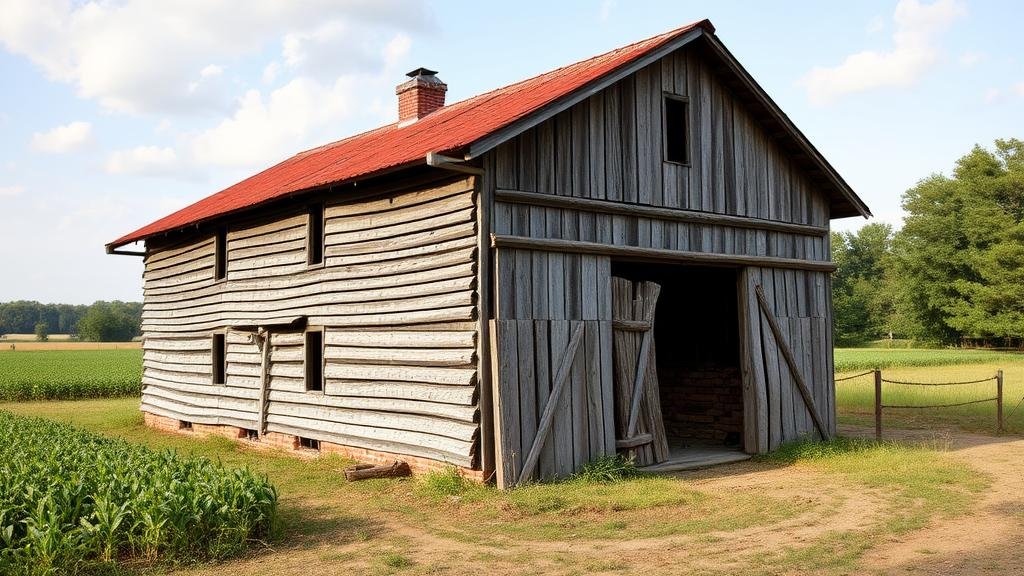Tracing Old Tobacco Drying Barns for Early Farming Relics
Tracing Old Tobacco Drying Barns for Early Farming Relics
The study of agricultural history offers valuable insights into the cultural and economic foundations of communities. Among the various structures that signify agricultural practices, tobacco drying barns hold particular historical significance. These barns served not only as functional buildings but also as cultural landmarks that reflect the evolution of tobacco farming techniques, particularly in the southeastern United States. This article explores the history, construction, and architectural significance of tobacco drying barns, as well as methodologies for identifying and preserving these early farming relics.
Historical Context of Tobacco Farming
Tobacco was first cultivated in the Americas by Indigenous peoples before European contact, but by the early 1600s, it became a major cash crop. The establishment of tobacco as a staple of the colonial economy can be traced to Virginia, where the first shipment of cured tobacco leaves was sent to England in 1614. This market demand prompted the widespread cultivation and drying of tobacco.
The specific design of tobacco barns evolved to support the curing process essential for transforming freshly harvested tobacco leaves into a marketable product. By the mid-18th century, structures characterized by distinctive architectural features began to appear across tobacco-growing regions, including Virginia, Kentucky, and North Carolina.
Construction and Architectural Features
Tobacco drying barns, often referred to as “curing barns,†were typically constructed from locally sourced timber and featured significant architectural traits tailored to their specific use:
- Ventilation: Curing required careful management of humidity and airflow, leading to designs that included large openings and adjustable vents.
- Raised Floors: The floors in many barns were raised to improve air circulation beneath the tobacco, which reduced the risk of rot.
- Multiple Levels: Some barns had several tiers for hanging tobacco, allowing for efficient use of vertical space.
Between 1840 and 1920, the construction of tobacco drying barns proliferated, with various local styles emerging based on regional preferences and climatic conditions.
Significance of Tobacco Drying Barns
These structures are not merely relics of agricultural pastimes; they represent significant socio-economic behaviors in early American settlements. The presence of tobacco barns often indicates the shift of land use from subsistence farming to commercial agriculture, contributing to the overall economic transformation of the South.
According to the United States Department of Agriculture (USDA), tobacco was the first agricultural commodity to exceed a market value of $1 billion in the United States in 1880. This economic drive fueled the construction of specialized barns tailored for efficient production, demonstrating how architecture adapts to technological advancements in agriculture.
Methodologies for Tracing and Preserving Tobacco Barns
The preservation and study of tobacco drying barns have gained importance in cultural heritage preservation. Various methodologies are employed to trace their existence, including:
- Field Surveys: Systematic field surveys can identify both standing and dilapidated barns. These surveys often involve photographing the structures, recording their dimensions, and noting distinctive features.
- Archival Research: Historical documents, such as maps, land deeds, and agricultural reports, can provide context about the locations and roles of these barns in communities.
- Community Engagement: Collaborating with local historical societies and farmers can yield invaluable oral histories that connect contemporary communities with their agricultural heritage.
For example, programs such as the National Trust for Historic Preservation have initiated projects focused on the documentation and preservation of these barns, emphasizing their cultural significance beyond their agricultural utility.
Challenges and Future Directions
Despite their significance, old tobacco drying barns face challenges such as neglect, structural degradation, and the encroachment of urban development. These factors can lead to significant loss of these unique cultural relics, hence creating a pressing need for targeted preservation efforts. use of digital tools, such as Geographic Information Systems (GIS), represents a promising advancement in mapping and analyzing the distribution of these barns.
Also, as societal values shift, the recognition of the importance of this agricultural heritage can lead to revitalization efforts that promote eco-tourism and educational projects aimed at preserving local history.
Conclusion
The tracing of old tobacco drying barns offers profound insights into the early agricultural practices and socio-economic transformations in America. Their unique architectural features reflect an adaptation to changing market demands and farming techniques. By employing comprehensive methods, communities can preserve these significant structures, as they represent not only farming relics but also an essential part of cultural identity and history.
To wrap up, the effort to document, preserve, and appreciate the heritage of tobacco drying barns is a crucial endeavor that enables future generations to understand their roots in agriculture and community development.



